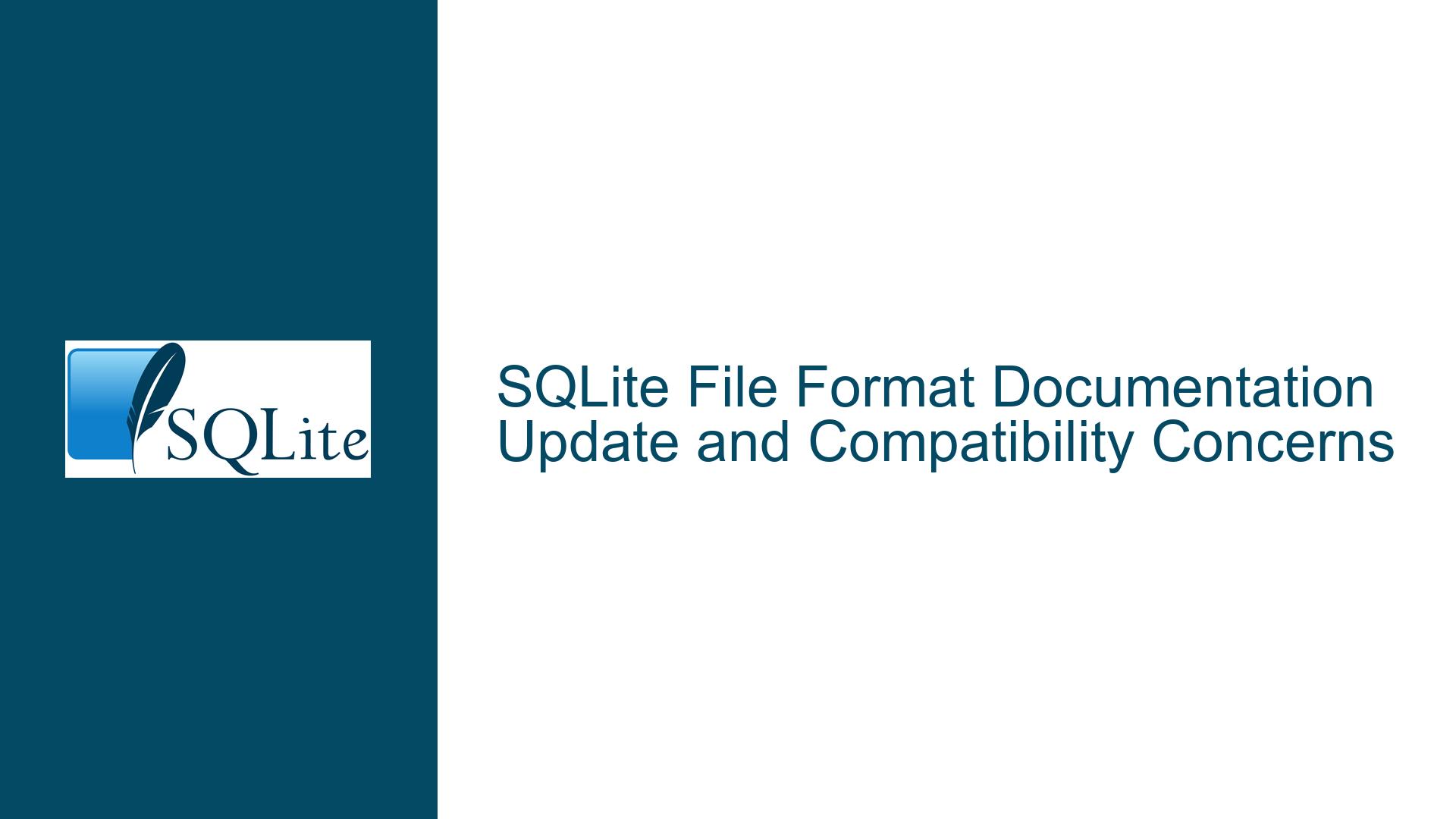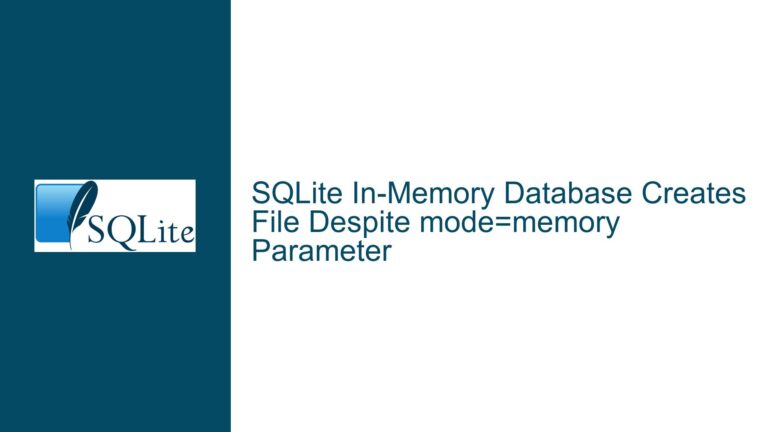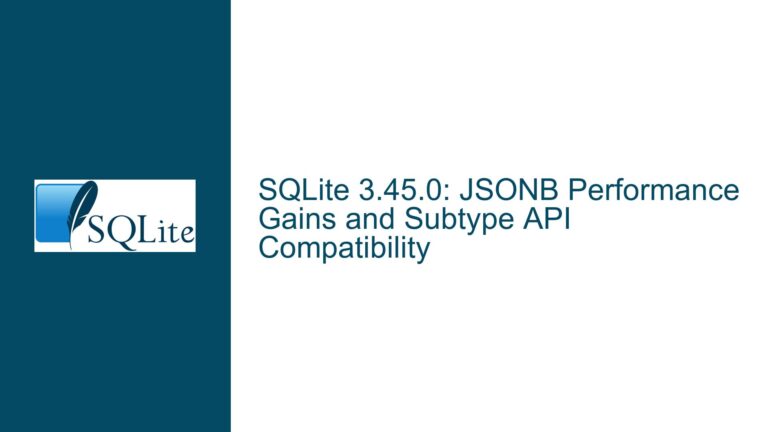SQLite File Format Documentation Update and Compatibility Concerns
SQLite File Format Documentation: Gaps and Compatibility Issues
The SQLite file format is a critical aspect of the database system, as it dictates how data is stored, accessed, and maintained across different versions of SQLite. The documentation surrounding the SQLite file format, however, has not been updated to reflect changes introduced in recent versions, particularly those up to version 3.31.0, which introduced Generated Columns. This lack of updated documentation can lead to confusion for developers who need to ensure backward compatibility or understand the implications of using newer features. The existing documentation pages, such as formatchng.html, fileformat.html, and fileformat2.html, either lack recent updates or contain redundant information, making it difficult for developers to find relevant and concise details about file format changes.
The primary issue lies in the fact that the formatchng.html page, which is intended to document file format changes, stops at version 3.0 of SQLite. This leaves a significant gap in the documentation, as many important changes have been introduced since then, including the introduction of Generated Columns in version 3.31.0. Additionally, the fileformat.html page, which provides a detailed description of the SQLite file format, does not reference the formatchng.html page, making it harder for developers to find information about compatibility issues. The existence of fileformat2.html, which appears to be a duplicate or historical artifact, further complicates the situation by potentially misleading developers who encounter it through web searches.
Possible Causes of Documentation Gaps and Redundancies
The lack of updated documentation on SQLite file format changes can be attributed to several factors. First, the SQLite development team may prioritize feature development and bug fixes over documentation updates, especially given the limited resources available for maintaining documentation. This is a common challenge in open-source projects, where developer time is often focused on core functionality rather than ancillary tasks like documentation.
Second, the structure of the existing documentation may not be optimized for clarity and ease of use. For example, the formatchng.html page contains a table that is irrelevant to the majority of readers, and the relevant information about file format changes is buried in section 3. This structure makes it difficult for developers to quickly find the information they need. Similarly, the fileformat.html page includes sections (2.6.4 to 2.6.7) that could be better placed in a page dedicated to the ANALYZE command, as they are not directly related to the file format itself.
Third, the presence of fileformat2.html suggests that there may have been historical reasons for creating a duplicate or alternative version of the fileformat.html page. Over time, this duplication may have been overlooked, leading to confusion for developers who encounter both pages through web searches. This redundancy not only wastes developer time but also risks providing inconsistent or outdated information.
Troubleshooting Steps, Solutions, and Fixes for Documentation Issues
To address the gaps and redundancies in the SQLite file format documentation, several steps can be taken. First, the formatchng.html page should be updated to include file format changes up to the latest version of SQLite, with a focus on features that impact backward compatibility, such as Generated Columns. This update should include a concise table listing each change, the corresponding SQLite version, and the date of the change. The existing table, which is irrelevant to most readers, should be moved to section 2, and the new table should be placed in section 3 for easy reference.
Second, the fileformat.html page should be revised to include a clear reference to the formatchng.html page, ensuring that developers can easily find information about file format changes. Additionally, sections 2.6.4 to 2.6.7, which are not directly related to the file format, should be moved to a page dedicated to the ANALYZE command. This reorganization will improve the clarity and focus of the fileformat.html page, making it easier for developers to find relevant information.
Third, the fileformat2.html page should be reviewed to determine its purpose and relevance. If it is indeed a duplicate or historical artifact, it should be either removed or redirected to the fileformat.html page. This will eliminate confusion and ensure that developers always access the most up-to-date and accurate information.
Finally, the SQLite development team should consider establishing a more systematic approach to documentation updates, ensuring that changes to the file format are documented in a timely manner. This could involve assigning specific team members to oversee documentation updates or integrating documentation tasks into the development workflow. By prioritizing documentation alongside feature development, the SQLite team can ensure that developers have access to the information they need to effectively use and maintain SQLite databases.
In conclusion, the current state of the SQLite file format documentation presents challenges for developers who need to understand file format changes and ensure backward compatibility. By updating the formatchng.html page, reorganizing the fileformat.html page, addressing the redundancy of fileformat2.html, and establishing a more systematic approach to documentation updates, the SQLite team can significantly improve the clarity and usefulness of the documentation. These changes will not only benefit developers but also contribute to the overall success and adoption of SQLite as a reliable and versatile database system.






